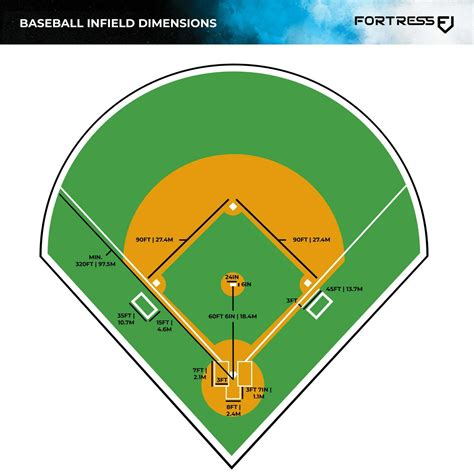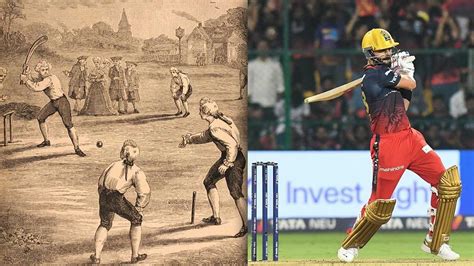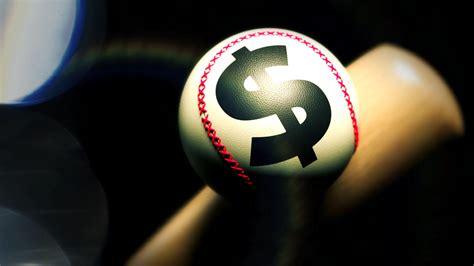Explore essential tips for designing a youth baseball field, including layout, measuring distances, avoiding common mistakes, and enhancing player performance.Welcome to our comprehensive guide on Baseball Field Layout: An Overview For Beginners. Whether you’re a coach, parent, or aspiring field designer, understanding the fundamentals of baseball field layout is essential for creating a safe and enjoyable play environment. This article covers the basic components of a baseball field, including infield and outfield dimensions, proper distance measurements, and essential design techniques for youth leagues. Additionally, we’ll address common mistakes in field setup to help you avoid potential pitfalls and ensure a seamless playing experience. Finally, discover how a well-designed field can significantly enhance player performance. Join us as we delve into the key elements that make up an ideal baseball field, providing you with the knowledge you need to create an exceptional playing space for young athletes.
Understanding The Basic Components Of A Baseball Field
A baseball field consists of several essential components, each designed to facilitate the game and ensure player safety. Understanding these elements will help beginners appreciate the layout and function of a baseball field.
- Diamond: The heart of the field is the diamond, which is formed by four bases: home plate, first base, second base, and third base. Players run around these bases to score runs.
- Pitcher’s Mound: Located at the center of the diamond, the pitcher’s mound is elevated and 60 feet 6 inches from home plate. This is where the pitcher stands to throw the ball to the batter.
- Infield and Outfield: The infield encompasses the area within the bases, including the pitcher’s mound and surrounding areas. The outfield is the grassy area beyond the infield, bordered by the foul lines and the outfield fence.
- Foul Lines: Running from home plate to the outfield fence, the foul lines demarcate fair and foul territory. Any ball hit outside these lines is counted as foul.
- Home Plate: This is the final base that players must reach to score a run. It is a five-sided slab of rubber, providing a designated area for batters and catchers.
- Base Paths: These are the paths runners take when moving between bases. The paths are crucial for creating a safe distance for runners and fielders during plays.
- Outfield Fence: This enclosure defines the boundary of the outfield. Home runs are achieved when the ball surpasses this barrier in fair territory.
- Dugouts: Located near the field, dugouts are seating areas for players and coaches. They provide shelter and a place for team strategy discussions.
- Baseball Field Markings: Lines such as the baseline, foul lines, and other markings indicate where players should stand and how the game is played.
Familiarizing yourself with these components of a baseball field will enhance your understanding of the game and its dynamics. Proper knowledge of the layout ensures not only effective gameplay but also contributes to safer play for everyone involved.
How To Measure Distances For An Accurate Field Layout
Measuring distances accurately is crucial for creating a functional and safe baseball field. A well-measured field can significantly improve gameplay and ensure compliance with regulations. Here are key steps to ensure accuracy:
- Gather Necessary Tools: You’ll need a measuring tape, marking paint, stakes, and a level.
- Establish Reference Points: Begin by identifying the pitcher’s mound and home plate as your primary reference points.
- Measure the Bases: The distance between the bases should be 90 feet for standard baseball fields. Use the measuring tape to determine the exact placement, marking each base location with paint or stakes.
Here’s a simple layout of the key distances:
| Component | Distance |
|---|---|
| Pitcher’s Mound to Home Plate | 60 feet, 6 inches |
| Base Path (Base to Base) | 90 feet |
| Outfield Fence (Recommended minimum) | 300 feet |
To ensure proper regulation and safety, using these measurements will create a standardized layout for your baseball field. Always double-check your measurements before finalizing their placement, as any inaccuracies can affect gameplay and competitiveness.
Essential Techniques For Designing A Youth Baseball Field
Designing a youth baseball field requires attention to detail and a focus on safety and accessibility. Here are some essential techniques to consider:
Implementing these techniques will help create a youth baseball field that is not only functional but also a safe and enjoyable environment for young athletes to develop their skills.
Common Mistakes In Baseball Field Setup And How To Avoid Them
Setting up a baseball field can be a daunting task, especially for beginners. However, avoiding common mistakes can lead to an efficient and enjoyable playing experience. Here are some frequently encountered pitfalls and ways to navigate around them:
| Mistake | Consequence | Solution |
|---|---|---|
| Incorrect base distances | Leads to unfair play and safety issues | Ensure proper measurements according to official regulations (90 feet for adult fields, 60 feet for youth) |
| Poor drainage | Waterlogging and field unplayability | Incorporate sloping and proper drainage systems during setup |
| Not marking the field properly | Confuses players and officials during games | Use clear, permanent markers and maintain them regularly |
| Neglecting safety zones | Increased risk of injuries | Design adequate outfield gaps and base paths that meet safety standards |
| Ignoring maintenance needs | Field deterioration affecting gameplay | Regularly maintain turf, bases, and facility conditions |
By being aware of these common mistakes when creating a baseball field, you can avoid problems that detract from the game and enhance the overall experience for players and spectators alike. Proper planning, ongoing maintenance, and attention to detail are crucial elements for a successful field setup.
The Impact Of A Well-Designed Baseball Field On Player Performance
A well-designed baseball field plays a crucial role in enhancing the performance of players. The layout, surface quality, and overall design can significantly influence how players perform during practices and games. Here are some ways a well-structured field can impact player performance:
- Safety: Properly designed fields reduce the risk of injuries. A smooth, well-maintained playing surface minimizes the chances of tripping or slipping, thus allowing players to focus on their game rather than worrying about potential hazards.
- Reinforced Skills: An ideal field layout supports the development of essential baseball skills. A symmetrical design with appropriate dimensions enables players to practice their hitting, catching, and throwing in a realistic environment.
- Improved Focus and Confidence: Players tend to feel more confident and focused on a well-kept field. The aesthetic appeal and organization of a baseball field can boost morale and have a positive psychological impact, leading to enhanced gameplay.
- Consistency: A consistent field allows players to anticipate how the ball will behave on different surfaces. This predictability is essential for honing skills and making split-second decisions during games, ultimately contributing to improved on-field performance.
- Enhanced Game Flow: The design of a baseball field can influence the flow of the game. For instance, well-placed dugouts, bullpens, and spectator areas can minimize disruptions, allowing players to maintain their competitive edge and focus on gameplay.
Investing time and resources into the design of a baseball field not only enhances player safety but also fosters skill development and boosts overall performance. Recognizing the importance of a well-laid-out field ensures a better experience for players, coaches, and fans alike.
Frequently Asked Questions
What are the basic dimensions of a baseball field?
A standard baseball field has a diamond layout with bases 90 feet apart, a pitcher’s mound located 60 feet 6 inches from home plate, and an outfield that varies in distance.
What is the importance of the pitcher’s mound?
The pitcher’s mound is elevated and centralized on the field, allowing pitchers to throw to home plate from a consistent height, which helps in the accuracy and effectiveness of pitches.
How is the outfield marked?
The outfield is typically marked with a fence or wall along the boundaries, and key areas like the outfield grass, warning track, and wall heights can vary between different ballparks.
What is the role of each base in baseball?
Each base (first, second, third, and home) serves as a checkpoint for runners. Players must touch each base in sequence to score a run.
How does the infield differ from the outfield?
The infield is made up of the area within the diamond, where most of the action occurs, while the outfield is the grassy area beyond the infield, primarily used for catching fly balls and fielding hits.
What are the rules regarding base running?
Base runners must touch each base in order and can only advance to the next base when the ball is in play, as long as they are not tagged out by the opposing team.
How does weather impact a baseball game?
Weather conditions such as rain, wind, and temperature can significantly affect gameplay, influencing the behavior of the ball, player performance, and sometimes leading to game cancellations.









